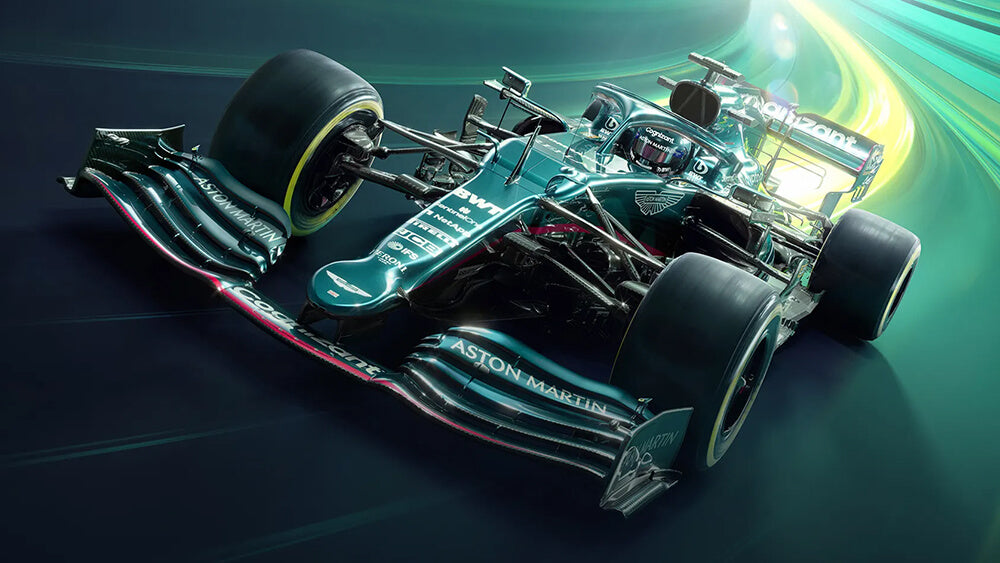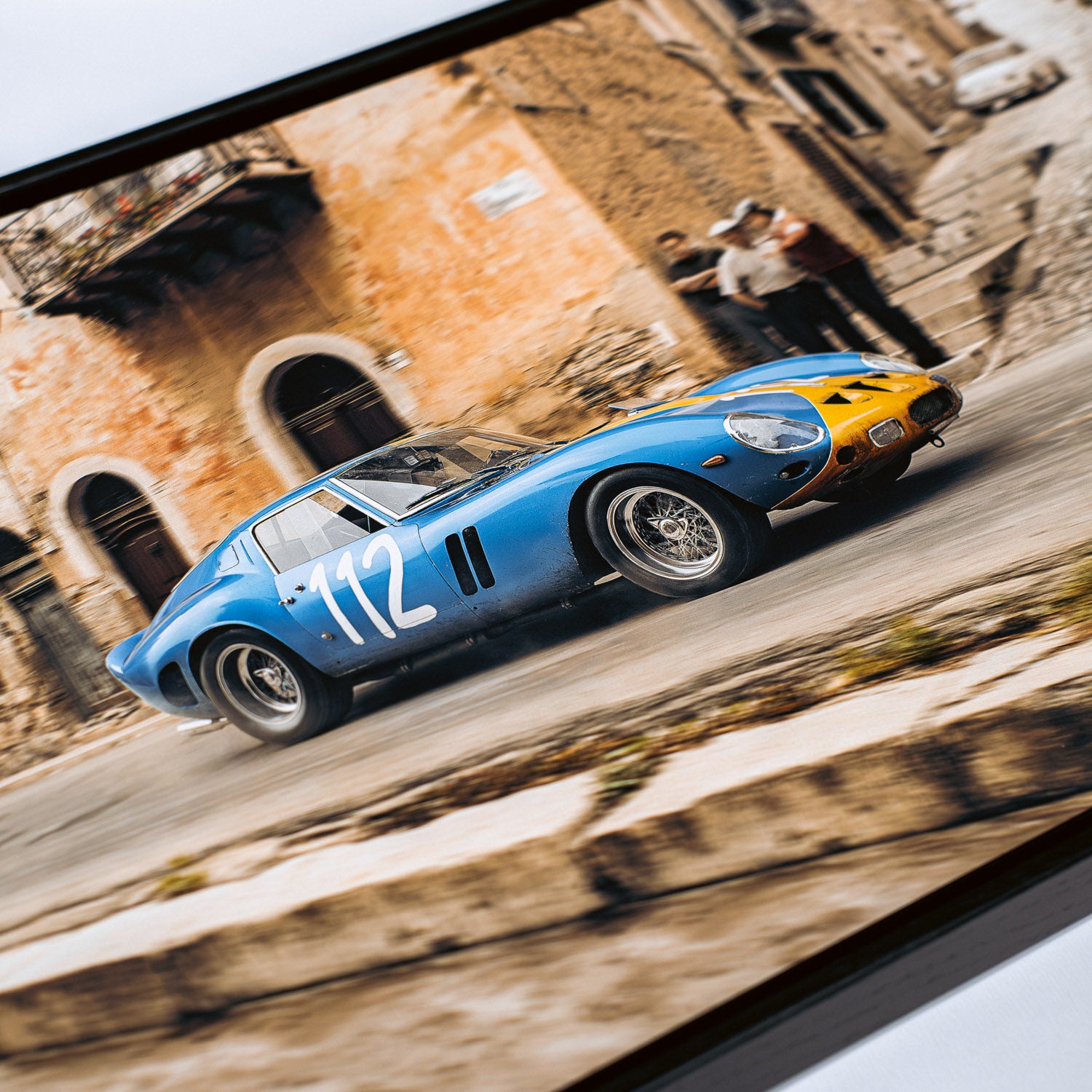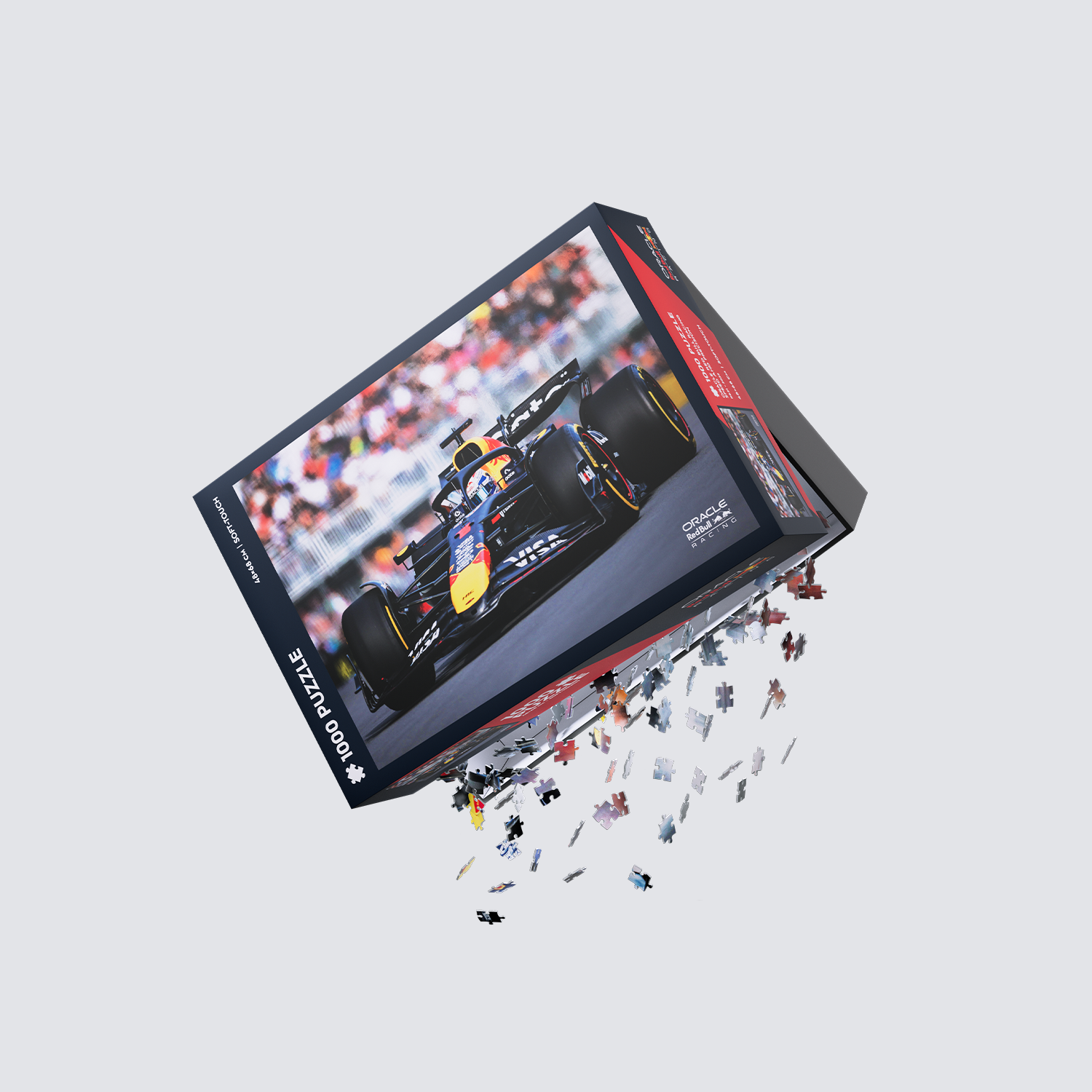“Plain and simple, it’s where Aston Martin should be.” So said Lawrence Stroll, CEO of the legendary British sports car marque when announcing the company’s return to Formula 1 after a 61-year absence.
“The return of Aston Martin to Formula 1 after more than 60 years away is also a landmark moment in the history of the sport,” he had added as British Racing Green-tinged teasers began to appear across the team’s rebranded social media channels. “This is the arena where many of the world’s biggest and best automotive manufacturers have competed and had success, so it’s a hugely exciting challenge for everyone involved as we aim to get this iconic British sports car brand amongst those names.”
And while Aston’s motorsport heritage is most often associated with endurance competition, its connection to grand prix racing is deep, stretching all the way back to the early days of the company.
Less than a decade after Lionel Martin and co-founder Robert Bamford joined the former’s surname to the first part of the Aston Clinton hill climb course to form the iconic marque in 1913, a pair of Aston Martin cars had been taken to Strasbourg to line up for the start of the 1922 French Grand Prix.
The brand’s progress to so elevated a level was swift. In the post-war years following the company’s foundation Martin enjoyed success in domestic hill climb events in his own cars but the rarefied environment of grand prix racing seemed a world away.
 Lionel Martin with the Aston Martin at the 1921 trial ahead of the 1922 French Grand Prix
Lionel Martin with the Aston Martin at the 1921 trial ahead of the 1922 French Grand Prix
However, as the Roaring ‘20s began things changed. Martin was introduced to a young driver who possessed not only boundless ambition but also (and perhaps more importantly) extremely deep pockets. The glamorous and stunningly wealthy son of a Polish Count and an American heiress, Louis Zborowski, had driven some of Aston Martin’s early models and impressed by their performance decided to order a pair of racing models with which he planned to rule the world of motorsport.
Martin and Zborowksi initially targeted the 1922 Isle of Man TT (Tourist Trophy) event and brimming with enthusiasm the Count stumped up around £10,000 for the project – around £500,000 (€579,000) today – a significant portion of which would be spent on the creation of an entirely new 16-valve twin overhead cam four-cylinder race engine.
The design of that engine, though, was almost as colourful as Zborowski. The Count’s friend and later team-mate Clive Gallop approached an acquaintance at Peugeot, Marcel Gremillion who in turn asked then celebrated engine designer Ernest Henry to ‘lend’ him details of a 3.0-litre engine Henry had designed for the Ballot marque. With a dramatic flourish, Henry supposedly tore his own drawings in half and Gremillion adapted the remnant into a new engine for Martin and Zborowksi.
The first Aston Martin Grand Prix cars, featuring the new 1.5-litre powerplant, a top speed of 85mph and branded TT1 and TT2 were delivered too late for entry to the Tourist Trophy and it was decided to give the cars their first outing at the 2.0-litre French Grand Prix on 15 July at Strasbourg.
 Louis Zborowski in Aston Martin for the French GP. Zborowksi continued to develop the TT cars in the years that followed. Image courtesy Motorsport Images
Louis Zborowski in Aston Martin for the French GP. Zborowksi continued to develop the TT cars in the years that followed. Image courtesy Motorsport Images
Zborowski piloted TT1 with Gallop at the wheel of TT2 but owing to rushed development, a smaller than usual engine capacity and the ballast mandated by regulations the cars proved uncompetitive and both retired with engine problems.
The setback did not deter Martin or Zborowksi who continued to develop the TT cars in the years that followed. Aston secured several podium finishes including a second place at the 1922 and 1923 editions of the Grand Prix de Penya Rhin and third place at the 1923 Grand Prix de Boulogne.
However, the following year Zborowski was killed when he lost control of his Mercedes and hit a tree during the Italian Grand Prix. He was just 29 years old. The death of the flamboyant nobleman signalled the beginning of the end of Aston Martin’s first foray into top-flight motorsport.
 AMR21 unveiled on March 3, 2021
AMR21 unveiled on March 3, 2021
The marque’s next major grand prix adventure would come more than 30 years later, as a result of its huge success in sports cars.
In 1947 Aston Martin was acquired by Sir David Brown and the new owner ushered in perhaps the most stories era of the company’s history. Keenly aware of the lustre motorsport success might bring to the brand Brown decided that he would attack on two fronts, building cars for both the World Sportscar Championship and the Formula 1 World Championship.
Success in sports cars was achieved swiftly, with the DB3S/4 winning the gruelling Ulster TT at Dundrod in 1953 a highlight among a series of domestic victories. That model eventually gave rise to the DBR1 which was driven to Le Mans victory by the legendary Carroll Shelby and Roy Salvadori in 1959. Grand Prix glory, though, famously eluded Brown, despite the best efforts of his Le Mans winning crew.
 Roy Salvadori finishing in second place driving the DBR4 in 1959. Image courtesy Motorsport Images
Roy Salvadori finishing in second place driving the DBR4 in 1959. Image courtesy Motorsport Images
Aston’s F1 hopes lay with the DBR4. Tested as early as 1957, it was not until 1959 that the car made its competition debut at the BRDC International Trophy event, run to Formula 1 rules, at Silverstone in May of that year.
Brown sent two cars and the No. 1 car, driven by Salvadori, finished in second place behind Jack Brabham in a Cooper-Climax T51. But the order at the flag said everything about how much Brown’s ambition had been overtaken by the march of technology.
While competitive in its test phase – Aston Team Manager John Wyer confidently reported during development that the DBR4 would go faster than a Maserati 250F – but by the time the front-engined car raced in anger in F1 in 1959 it has already been overtaken by the small but supremely quick rear-engined Coopers. As Brabham and Cooper swept to the drivers’ and constructors' titles, Salvadori raced to best results of sixth place at the British and Portuguese Grands Prix, while Shelby’s best was eighth at the latter race, in Monsanto. Salvadori could at least walk away satisfied that he had put the DBR4 on the front row at Aintree.
Brown continued to harbour the F1 dream into 1960 but when the DBR5 proved uncompetitive – 11th at the British Grand Prix being the best result of three entries – Aston Martin withdrew from top-flight single-seater motorsport.
In recent times Aston has once again focused on sports car racing and in 2020 it enjoyed its best season since the heady days of its Le Mans triumph in 1959 by winning the 2019-20 GT World Championship manufacturer’s title and the Drivers’ title with Nicki Thiim and Marco Sørensen.
 Le Mans triumph of 2019-20 at the GT World Championship manufacturer’s title and the Drivers’ title with Nicki Thiim and Marco Sørensen.
Le Mans triumph of 2019-20 at the GT World Championship manufacturer’s title and the Drivers’ title with Nicki Thiim and Marco Sørensen.
And earlier, Aston Martin revealed to the world its 2021 Formula One World Championship competitor, the new AMR21, in a virtual live event. The event took place in The Vault, an immersive virtual experience that played host to brand's first GP car since the DBR5. All eyes are on the shining green livery and Sebastian Vettel. "The 500 men and women who conceive, manufacture, build and prepare our cars so that we can go racing at the pinnacle of global motorsport have always punched above their weight." added CEO Stroll at the glittering unveiling. For the rest, time will tell.















































